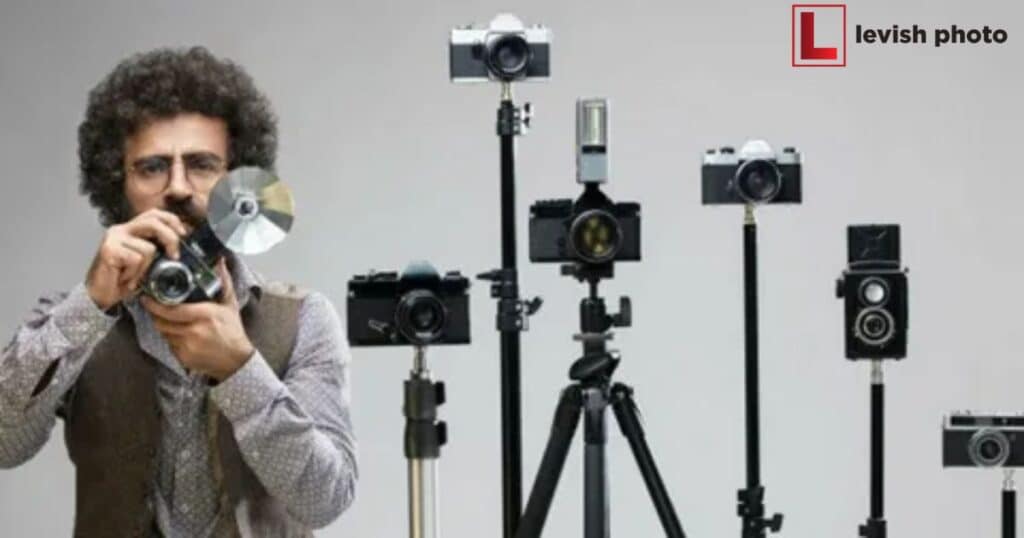Photograph in Spanish refers to the various ways the Spanish language expresses the concept of a photograph. It’s a term used to communicate the idea of a captured image in Spanish-speaking regions. Understanding how to say Photograph in Spanish is not only useful for practical communication but also a gateway to exploring the rich cultural world of Spanish-speaking countries.
How to say Photograph in Spanish? Picture yourself in a foreign land, surrounded by a different language. You want to share your favorite photo with someone, but you don’t know the word for photograph in Spanish. Don’t worry.
Photograph in Spanish. It’s not just a word, it’s a key to a world of culture and expression. The Spanish language offers several ways to describe a photograph, and each term carries its own nuance. From the formal fotografía to the casual foto, these words reflect the importance of visual storytelling and memory preservation in Spanish-speaking countries.
Introduction to Photography in Spanish-Speaking Countries
Photography is a universal medium that transcends linguistic and cultural barriers, allowing individuals to communicate, express, and share experiences through visual storytelling. In Spanish-speaking countries, photography is not only a form of artistic expression and documentation, but it also plays a significant role in preserving the rich and diverse cultures of these regions. This introduction provides an overview of the importance and influence of photography in Spanish-speaking countries.
Historical Significance
Photography arrived in the Spanish-speaking world soon after its invention in the 19th century. The earliest photographs were often produced by itinerant photographers who traveled from town to town, capturing portraits and documenting significant events. These photographs, often known as “daguerreotypes” after the process’s inventor Louis Daguerre, provided a unique visual record of daily life and historic moments.
In countries such as Mexico, where notable events like the Mexican Revolution took place, photography played a crucial role in documenting and shaping the nation’s history. Iconic images captured during the revolution, such as the work of Agustín Casasola, have become enduring symbols of Mexican identity.
Cultural Expression and Identity
Photography is an essential medium for the expression of cultural identity in Spanish-speaking countries. Photographers use their cameras to capture the vibrant traditions, art, and folklore that define these diverse regions. The photographs serve as a means of preserving, celebrating, and sharing their cultural heritage with the world.
In Spain, for example, photography has been instrumental in showcasing the country’s rich history and architectural treasures. From the intricate details of Gaudí’s Sagrada Familia in Barcelona to the awe-inspiring Alhambra in Granada, Spanish photographers have captured the essence of their cultural heritage.
In Latin American countries, photography is used to document and celebrate indigenous cultures, folklore, and traditions. Photographers like Graciela Iturbide in Mexico have captured the beauty and resilience of indigenous communities, while Mario Cravo Neto in Brazil has explored the intersection of African, European, and Indigenous cultures in his work.
Social and Political Commentary
I’d like to request a photographer for a photoshoot. Photography often serves as a powerful tool for social and political commentary in Spanish-speaking countries. Photographers use their lenses to shed light on critical issues, challenging societal norms and advocating for change. The visual medium of photography allows for a compelling and immediate connection with the viewer.
In Cuba, photography has been used to document the nation’s history and revolutions, from the Cuban War of Independence to the Cuban Revolution led by Fidel Castro. Photographers like Alberto Korda played a pivotal role in capturing the events and personalities that shaped Cuba’s political landscape.
Prominent Photographers

Spanish-speaking countries have produced numerous world-renowned photographers who have left a lasting impact on the medium. Some of these notable photographers include:
Graciela Iturbide (Mexico)
Known for her evocative and poetic images, Iturbide’s work focuses on indigenous cultures, rituals, and daily life. She has received international acclaim for her compelling photographs.
Alberto Korda (Cuba)
Alberto Korda’s iconic image of Che Guevara, known as “Guerrillero Heroico,” is one of the most recognized photographs in the world. His work is celebrated for its historical and political significance.
Mario Testino (Peru)
A fashion and portrait photographer, Testino has worked with renowned fashion magazines and celebrities. His work showcases the intersection of fashion and culture.
Sebastião Salgado (Brazil)
Although Brazil primarily speaks Portuguese, Sebastião Salgado is a prominent figure in the world of photography. His black-and-white images often address social and environmental issues on a global scale.
Modern Trends
In the digital age, photography in Spanish-speaking countries has adapted to new technologies and trends. The advent of social media platforms has made it easier for photographers to share their work with a global audience. Spanish-speaking photographers use Instagram, Flickr, and other platforms to showcase their creativity and engage with photography enthusiasts worldwide.
Spanish-speaking countries also host numerous photography festivals and exhibitions. These events provide a platform for photographers to display their work, share ideas, and collaborate with fellow artists. Festivals like the International Photo Festival in Havana, Cuba, and the Fotográfica Bogotá in Colombia attract photographers, artists, and enthusiasts from around the world.
The Word Photograph in Spanish
In the Spanish language, there are several terms used to refer to a photograph. The choice of words can vary depending on the region and personal preference. Here are some of the most common ways to say photograph in Spanish.
Fotografía
Fotografía is the most widely used word for photograph in Spanish. It is recognized and understood throughout the Spanish-speaking world. For example, you might say, Tengo una fotografía de mi familia (I have a photograph of my family).
Foto
The term foto is an abbreviation of fotografía and is commonly used in informal conversations. It’s similar to saying photo in English. For instance, you can say, “Voy a tomar una foto” (I’m going to take a photo).
Instantánea
Instantánea is another word used to describe a photograph, emphasizing the idea of an instant or snapshot. This term is less common but still understood. You might say, Tomé una instantánea del paisaje (I took a snapshot of the landscape).
Imagen
The word image refers to an image or picture and can be used to talk about photographs as well. For example, Esa es una hermosa imagen (That is a beautiful photograph).
Fotografía
The word “fotografía” can also be extended to “fotografía” when you want to emphasize the artistic aspect of photography. You could say, “La fotografía de Ansel Adams es famosa” (The photography of Ansel Adams is famous).
Regional Variations
Just like in English, the way people refer to photographs can vary by region in the Spanish-speaking world. Here are some regional variations:
Spain
In Spain, “foto” and “fotografía” are the most commonly used terms. However, you might also hear “instantánea” or “imagen” depending on the context.
Mexico
In Mexico, “foto” and “fotografía” are prevalent. The word “foto” is used more frequently in everyday conversation.
Argentina
In Argentina, you’ll often hear “foto” and “fotografía,” with “foto” being the more informal choice.
Colombia
In Colombia, “foto” is widely used, but “fotografía” is also understood.
Cuba
In Cuba, “foto” and “fotografía” are the standard terms, with “foto” being the more common of the two.
Idiomatic Expressions Involving Photography
Photography has inspired various idiomatic expressions in the Spanish language. These expressions provide insight into the cultural significance of photography in different Spanish-speaking regions:
Una imagen vale más que mil palabras
This expression, which means “a picture is worth a thousand words,” is used in many Spanish-speaking countries. It highlights the power of visual storytelling through photography.
En un abrir y cerrar de ojos
This phrase, meaning “in the blink of an eye,” relates to the idea that photography captures moments that pass quickly.
La cámara no miente
Translated to the camera doesn’t lie, this expression emphasizes the authenticity and truthfulness often associated with photographs.
Photography in Spanish-Speaking Culture
Photography is an essential part of Spanish-speaking culture. It’s used to document festivals, capture the beauty of landscapes, and tell stories through images. Some iconic photographers from Spanish-speaking countries have made significant contributions to the world of photography.
Graciela Iturbide (Mexico)
Graciela Iturbide is a renowned Mexican photographer known for her compelling portraits and images that reflect the indigenous cultures of Mexico. Her work has received international acclaim.
Sebastião Salgado (Brazil)
While Brazil primarily speaks Portuguese, Sebastião Salgado, a prominent photographer, hails from a Portuguese-speaking country. His powerful black-and-white images often address social and environmental issues.
Alberto Korda (Cuba)
Alberto Korda’s photograph of Che Guevara, known as Guerrillero Heroico, is one of the most iconic images in the world. Korda’s work as a photographer in Cuba is celebrated for its historical and political significance.
Learning More About Photography in Spanish
If you’re interested in photography and want to explore the subject in Spanish, you’ll find numerous resources available. Spanish-language photography books, courses, and websites can help you delve deeper into this art form.
Some valuable terms related to photography in Spanish include.
- Cámara: Camera
- Objetivo: Lens
- Exposición: Exposure
- Enfoque: Focus
- Composición: Composition
- Encuadre: Framing
- Obturador: Shutter
- Flash: Flash
Learning technical photography terms in Spanish can enhance your ability to communicate with photographers or photography enthusiasts in Spanish-speaking regions.
FAQs
What are the common ways to say “photograph” in Spanish?
Common terms include “fotografía” (formal), “foto” (casual), and “instantánea” (snapshot).
Are there regional variations in how “photograph” is said in Spanish?
Yes, the choice of term may vary by region. For example, “foto” is more common in Mexico, while “imagen” is widely understood.
How is photography culturally significant in Spanish-speaking countries?
Photography is a means of preserving cultural identity, documenting history, and offering social and political commentary.
Who are some famous photographers from Spanish-speaking countries?
Prominent photographers include Graciela Iturbide (Mexico), Alberto Korda (Cuba), Mario Testino (Peru), and Sebastião Salgado (Brazil).
How can I learn more about photography in Spanish?
Explore Spanish-language photography books, courses, and websites, and familiarize yourself with technical terms related to photography.
Conclusion
In the vibrant tapestry of Spanish-speaking countries, the word photograph is a gateway to a world of cultural richness and artistic expression. Whether you choose fotografía, foto, or any other term, it’s not just a word; it’s a connection to the heart and soul of these diverse regions.
Photography serves as a visual storyteller, preserving history, celebrating culture, and providing a powerful lens for social and political commentary. From iconic photographers who’ve made their mark on the global stage to the everyday use of photography to capture the extraordinary and the mundane, this language bridges language gaps and brings people closer to the heart of Spanish-speaking cultures.
Learning how to say “photograph” in Spanish opens doors to new experiences, understanding, and connections, and it’s a small yet meaningful step toward immersing yourself in the vibrant and diverse world of Spanish-speaking countries.
